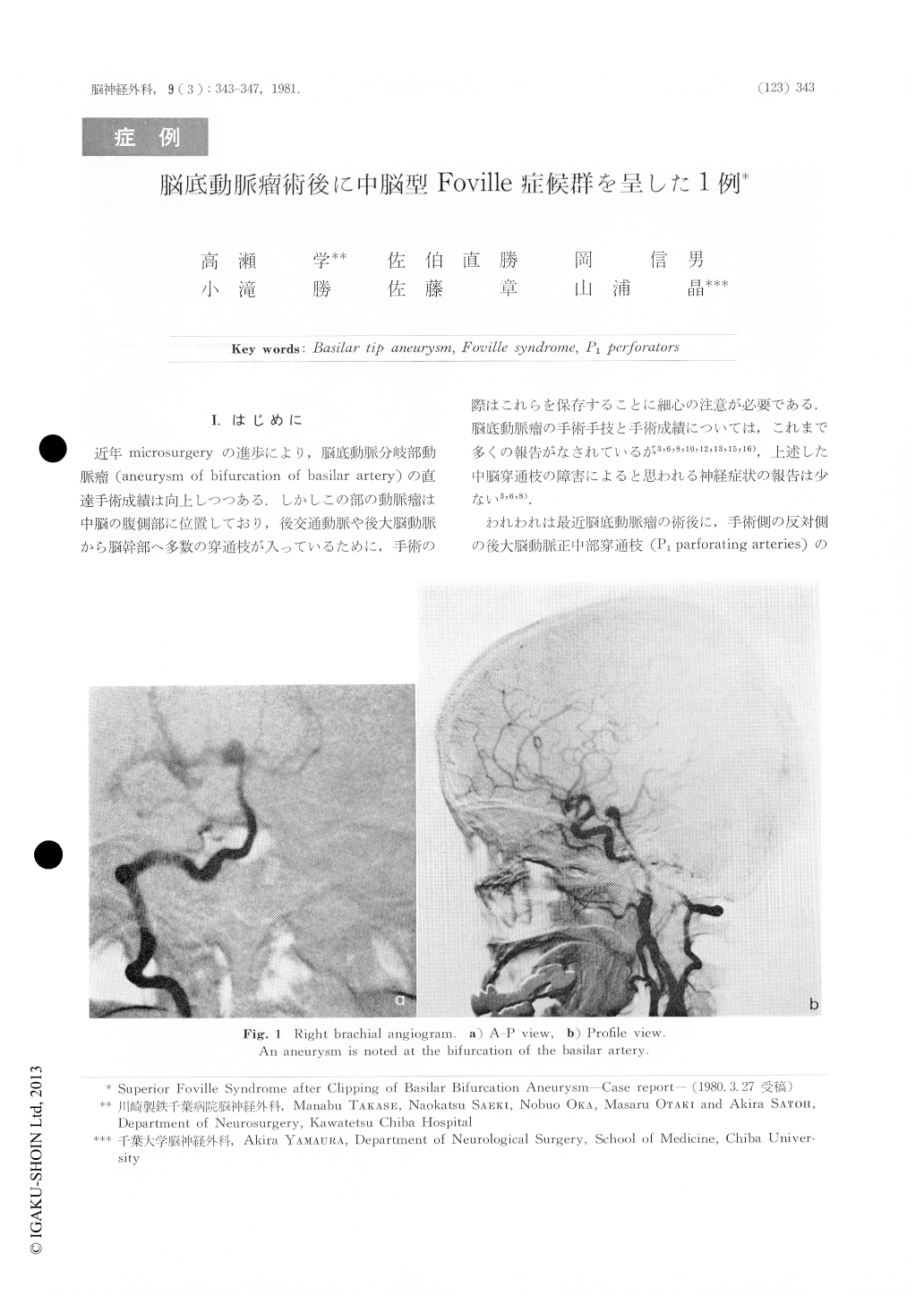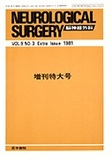Japanese
English
- 有料閲覧
- Abstract 文献概要
- 1ページ目 Look Inside
I.はじめに
近年microsurgeryの進歩により,脳底動脈分岐部動脈(aneurysm of bifurcation of basilar artery)の直達手術成績は向上しつつある.いかしこの部の動脈瘤は中脳の腹側部に位置しており,後交通動脈や後大脳動脈から脳幹部へ多数の穿通枝が入っているために,手術の際はこれらを保存することに細心の注意が必要である.脳底動脈瘤の手術手技と手術成績については,これまで多くの報告がなされているが3,6,8,10,12,13,15,16),上述した中脳穿通枝の障害によると思われる神経症状の報告は少ない3,6,8).
われわれは最近脳底動脈瘤の術後に,手術側の反対側の後大脳動脈正中部穿通枝(P1 parforating arteries)の一過性の血流障害に起因すると思われる,中脳型Foville症候群とWeber症侯群の合併例を経験したので,その発生機序について若干の文献的考察を加えて報告する.
The patient was a 48-year-old housewife, who had a sudden onset of severe headache followed by loss of consciousness for a few hours on the day of admission. Initially she showed slight restlessness due to headache, neck stiffness and subhyaloid hemorrhage. Four-vessel study revealed a basilar aneurysm on right retrograde brachial angiography and anterior communicating aneurysm on left carotid angiography. Two weeks after the onset, when she had noneurological deficit except for intermittent appearance of disorientation, both aneurysms were successfully clipped through right pterional approach of Yasargil.

Copyright © 1981, Igaku-Shoin Ltd. All rights reserved.


